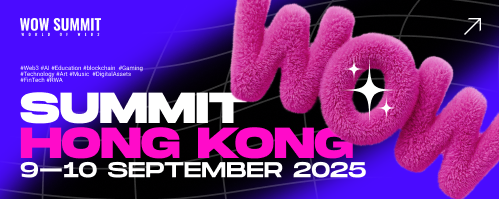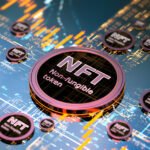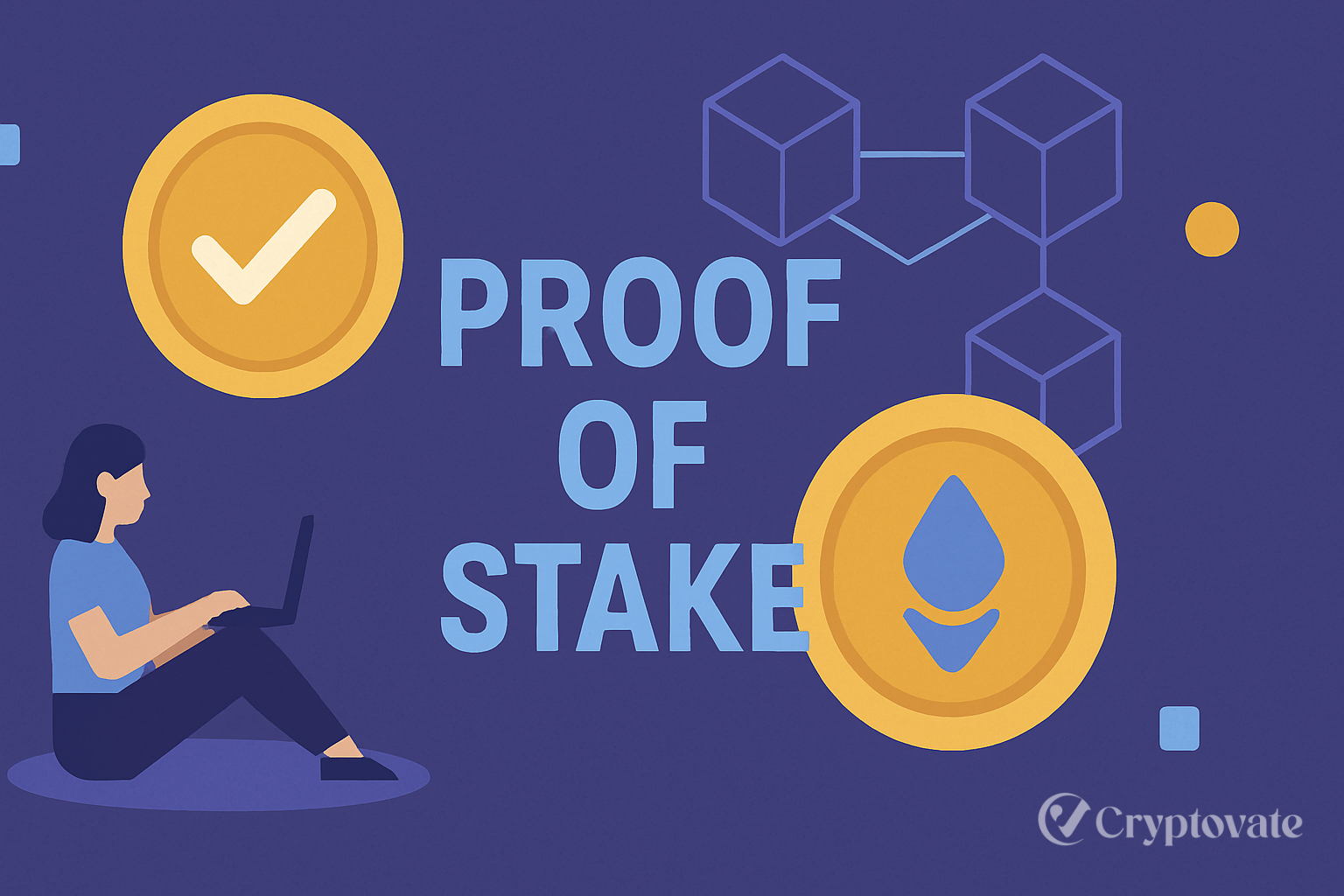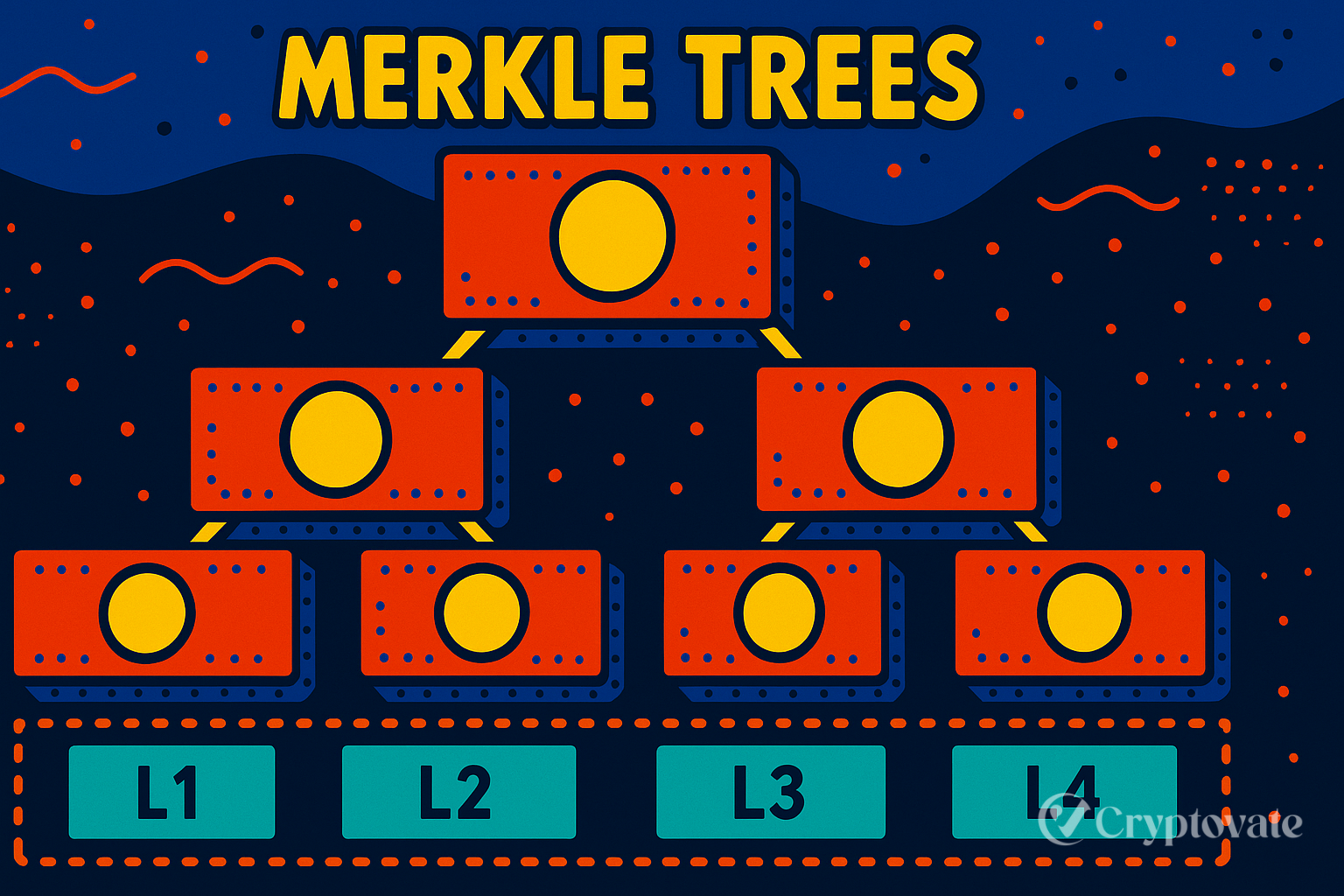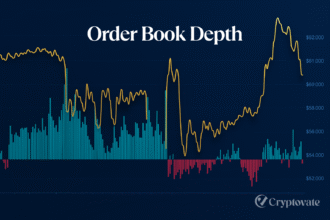In a world where technological advancements are constantly shaping industries, one technological phenomenon stands out: blockchain. As we dive into the future, embracing the possibilities of this revolutionary technology is becoming essential. That’s why we’re here to unveil the top 10 blockchain technologies that are set to transform the way we live and conduct business. From decentralized finance (DeFi) to supply chain management, these innovative blockchain applications are disrupting traditional systems and paving the way for a more transparent and efficient future. Imagine a world where financial transactions are secure, supply chains are easily traceable, and data is tamper-proof. It’s all possible with blockchain. Join us as we explore these groundbreaking technologies, each with its own unique potential to revolutionize industries and drive positive change. From smart contracts to tokenization, these developments are reshaping the way we think about transactions and data management. The future is here, and blockchain technology is at the forefront of this digital revolution. Get ready to unlock the potential of these top 10 blockchain technologies and reshape the way we navigate the digital world.
Blockchain Technology Basics
Definition of Blockchain
At its core, blockchain is a distributed digital ledger that records transactions across many computers so that the record cannot be altered retroactively without the alteration of all subsequent blocks and the consensus of the network. This ensures transparency and security in the data handled by blockchain.
Key Components of Blockchain Technology
- Blocks and Transactions: Each block in a blockchain contains a list of transactions. Once a block is completed, it is linked to the previous block, forming a chain.
- Distributed Ledger: This technology involves a decentralized database that is managed by multiple participants across different locations.
- Cryptographic Hashing: Each block includes a unique code known as a cryptographic hash. This ensures data integrity and links the blocks together.
How Blockchain Works
- Transaction Processing: Transactions are recorded in a block, verified by nodes (computers in the network), and then added to the blockchain in a chronological order.
- Consensus Mechanisms: These are algorithms that ensure all nodes in a network agree on the validity of transactions. Examples include Proof of Work (PoW) and Proof of Stake (PoS).
- Decentralization: Unlike traditional databases controlled by a central authority, blockchains are decentralized, meaning no single entity has control, enhancing security and reducing the risk of fraud.
Top 10 Revolutionary Blockchain Technologies
1. Ethereum
Overview
Ethereum, often referred to as the “world computer,” is a decentralized platform that allows developers to build and deploy smart contracts and decentralized applications (DApps). Founded by Vitalik Buterin, Ethereum has been instrumental in pioneering new use cases for blockchain technology beyond digital currency.
Smart Contracts and DApps
Smart contracts are self-executing contracts with the terms directly written into code. They automatically execute and enforce the terms of an agreement, reducing the need for intermediaries. DApps leverage these smart contracts to provide various services in a decentralized manner.
Use Cases and Applications
Ethereum’s versatility has led to a multitude of applications across industries:
- Finance: DeFi platforms like Uniswap and Compound.
- Gaming: Blockchain-based games such as Axie Infinity.
- Supply Chain: Enhanced tracking and transparency.
Future Developments
With the transition to Ethereum 2.0, the platform aims to improve scalability, security, and sustainability through the implementation of the Proof-of-Stake (PoS) consensus mechanism and sharding.
2. Hyperledger Fabric
Overview
Hyperledger Fabric is an open-source blockchain framework aimed at enterprise use. Developed under the Hyperledger Project by the Linux Foundation, it offers a modular architecture and flexibility for various business applications.
Features and Capabilities
- Permissioned Network: Unlike public blockchains, Hyperledger Fabric operates on a permissioned network where participants are known and trusted.
- Modular Architecture: It allows components such as consensus and membership services to be plug-and-play.
- Chaincode: Hyperledger Fabric’s smart contracts, called chaincodes, are executed within a containerized environment.
Industry Applications
Hyperledger Fabric is widely used in sectors such as:
- Finance: Streamlining trade finance processes.
- Healthcare: Secure and efficient management of patient data.
- Supply Chain: Enhancing transparency and traceability.
Roadmap and Future Prospects
Hyperledger Fabric continues to evolve with enhancements in scalability, privacy, and interoperability, making it a robust solution for enterprise-level applications.
3. Cardano
Overview
Cardano, founded by Charles Hoskinson, is a blockchain platform that emphasizes a research-driven approach to development. It is known for its strong focus on security, sustainability, and scalability.
Proof-of-Stake Mechanism
Cardano uses a unique PoS protocol called Ouroboros, which is designed to provide high security and energy efficiency compared to traditional PoW systems.
Research-Driven Development
Cardano’s development is guided by academic research and peer-reviewed studies, ensuring a scientifically rigorous approach to blockchain innovation.
Upcoming Innovations
Future upgrades, such as Hydra, aim to significantly enhance Cardano’s scalability, allowing the network to process millions of transactions per second.
4. Polkadot
Overview
Polkadot is a multi-chain platform designed to enable different blockchains to interoperate and share information securely. Created by Dr. Gavin Wood, one of Ethereum’s co-founders, Polkadot aims to facilitate a web where data and assets can move freely across different blockchains.
Interoperability and Parachains
Polkadot’s key feature is its ability to connect various blockchains (parachains) into a single network, allowing them to communicate and share security.
Key Projects and Collaborations
Notable projects building on Polkadot include:
- Acala: A DeFi hub for stablecoin issuance.
- Moonbeam: A smart contract platform compatible with Ethereum.
Future Roadmap
Polkadot continues to expand its ecosystem with the addition of more parachains and advancements in interoperability, security, and scalability.

5. Solana
Overview
Solana is known for its high throughput and low latency, making it a preferred platform for applications that require fast transaction processing. Founded by Anatoly Yakovenko, Solana aims to deliver a scalable blockchain without compromising decentralization.
High Throughput and Low Latency
Solana achieves impressive speeds through its Proof-of-History (PoH) consensus combined with PoS, allowing it to process thousands of transactions per second with minimal delays.
Major Use Cases
Solana is popular in areas such as:
- DeFi: Applications like Serum and Raydium.
- NFTs: Marketplaces like Solanart and Magic Eden.
- Gaming: High-performance blockchain games.
Innovations on the Horizon
Upcoming features include enhancements to the PoH consensus and further optimizations to increase the network’s efficiency and performance.
6. Avalanche
Overview
Avalanche is a platform designed for launching highly decentralized applications, new financial primitives, and interoperable blockchains. It aims to provide a scalable and customizable solution for various blockchain needs.
Consensus Protocol
Avalanche’s consensus protocol, known as Avalanche Consensus, offers high throughput, low latency, and strong security guarantees, making it suitable for diverse applications.
Applications and Ecosystem
Avalanche supports a vibrant ecosystem, including:
- DeFi: Platforms like Aave and SushiSwap.
- NFTs: Marketplaces such as Kalao.
- Enterprise Solutions: Customizable private blockchain deployments.
Future Developments
The roadmap for Avalanche includes further scalability improvements and expanded interoperability with other blockchain networks.
7. Cosmos
Overview
Cosmos is a decentralized network of independent parallel blockchains, each powered by Byzantine Fault Tolerance (BFT) consensus algorithms like Tendermint. Cosmos aims to create an “Internet of Blockchains” by enabling seamless interactions between them.
Interoperable Blockchain Network
Cosmos facilitates interoperability through its Inter-Blockchain Communication (IBC) protocol, allowing different blockchains to transfer data and value.
Key Innovations and Projects
Key projects within the Cosmos ecosystem include:
- Osmosis: A decentralized exchange (DEX) for cross-chain trading.
- Terra: A blockchain for stablecoins and payment solutions.
Future Directions
Cosmos plans to enhance its ecosystem with more interoperable blockchains and services, improving the ease of use and functionality for developers and users.
8. Algorand
Overview
Algorand is a blockchain platform known for its pure Proof-of-Stake (PPoS) consensus mechanism, which provides scalability, security, and decentralization. Founded by MIT professor Silvio Micali, Algorand focuses on real-world applications and efficiency.
Pure Proof-of-Stake and Scalability
Algorand’s PPoS ensures that every new block is added securely and efficiently, supporting a high transaction throughput without sacrificing decentralization.
Real-World Applications
Algorand is used in various domains, including:
- Finance: Supporting digital currencies and stablecoins.
- Supply Chain: Enhancing transparency and efficiency.
- Government: Secure and transparent voting systems.
Prospects for Growth
Algorand’s future includes expanding its ecosystem, increasing transaction speeds, and enhancing its smart contract capabilities to support more complex applications.
9. Tezos
Overview
Tezos is a self-amending blockchain that allows for upgrades without hard forks, ensuring a smooth and continuous evolution. It focuses on governance and upgradability, with a built-in mechanism for proposing and adopting changes.
Self-Amending Blockchain
Tezos’ on-chain governance allows stakeholders to propose, vote on, and implement changes to the protocol, facilitating seamless upgrades and avoiding disruptions.
Governance and Upgradability
Tezos’ governance model promotes community-driven development and adaptability, allowing the platform to evolve in response to the needs of its users.
What’s Next for Tezos?
Future developments for Tezos include enhancements to its scalability, security, and support for more sophisticated smart contracts and applications.
10. Filecoin
Overview
Filecoin is a decentralized storage network designed to enable secure and efficient data storage and retrieval. Developed by Protocol Labs, Filecoin provides an incentive layer on top of IPFS (InterPlanetary File System) to encourage data storage and sharing.
Decentralized Storage Network
Filecoin allows users to rent out their unused storage space or purchase storage from the network, creating a decentralized and robust system for data storage.
Use Cases and Adoption
Filecoin is utilized for various purposes, including:
- Data Archiving: Long-term storage of important records.
- Content Distribution: Decentralized hosting for media and websites.
- Data Marketplaces: Buying and selling of storage services.
Future Innovations
Upcoming innovations for Filecoin include enhanced storage and retrieval efficiencies, improved network performance, and expanded integrations with other blockchain platforms.
Applications of Blockchain Technologies
Blockchain technologies are transforming numerous industries, providing solutions that enhance transparency, security, and efficiency.
Finance and Banking
Blockchain enables decentralized finance (DeFi) platforms, which offer financial services without intermediaries. This includes lending, borrowing, trading, and earning interest through decentralized protocols.
Supply Chain and Logistics
Blockchain enhances supply chain management by providing real-time tracking, verifying authenticity, and ensuring transparency from production to delivery.
Healthcare
In healthcare, blockchain ensures secure patient data management, streamlines clinical trials, and improves supply chain integrity for pharmaceuticals.
Real Estate
Blockchain facilitates property transactions by providing secure and transparent records, reducing fraud, and enabling fractional ownership of real estate.
Energy
Blockchain supports peer-to-peer energy trading, grid management, and renewable energy certificate trading, promoting efficient and sustainable energy use.
Voting and Governance
Blockchain-based voting systems ensure transparency, security, and tamper-proof records, enhancing trust in electoral processes.
Entertainment and Media
Blockchain protects intellectual property rights, enables fair royalty distribution, and supports decentralized content distribution platforms.
Identity Management
Blockchain provides secure and verifiable digital identities, reducing fraud and enhancing privacy for users across various online services.
Benefits of Blockchain Technologies
Transparency and Trust
Blockchain’s immutable ledger ensures transparency and trust among participants, as all transactions are recorded and verifiable by all network members.
Security and Immutability
The cryptographic principles underlying blockchain provide robust security, making it difficult for unauthorized parties to alter or tamper with data.
Efficiency and Speed
Blockchain can streamline processes, reduce the need for intermediaries, and expedite transaction times, leading to greater efficiency in operations.
Reduced Costs
By eliminating intermediaries and reducing transaction times, blockchain can significantly lower operational costs for businesses and individuals.
Decentralization and Autonomy
Blockchain enables decentralized control, allowing users to retain autonomy over their data and assets without relying on central authorities.
Challenges and Limitations
Scalability Issues
Many blockchain networks face challenges in handling large volumes of transactions simultaneously, leading to congestion and slower processing times.
Energy Consumption
Blockchain, particularly those using PoW consensus, can be energy-intensive, raising concerns about environmental impact and sustainability.
Regulatory and Legal Hurdles
Blockchain’s decentralized nature often clashes with existing regulatory frameworks, creating uncertainty and challenges in compliance and governance.
Interoperability Challenges
Ensuring seamless communication and data exchange between different blockchain networks remains a significant hurdle to broader adoption.
Adoption and Integration Barriers
The complexity of blockchain technology and resistance to change can hinder its adoption and integration into existing systems and processes.
Also Read: What are NFTs? Your Ultimate Guide to Non-Fungible Tokens
Recent Innovations in Blockchain
Layer 2 Solutions
Layer 2 solutions, such as Lightning Network for Bitcoin and rollups for Ethereum, aim to enhance scalability and transaction throughput by processing transactions off-chain.
Sharding
Sharding involves splitting a blockchain into smaller, more manageable pieces, or shards, each capable of processing transactions independently, thereby increasing scalability.
Zero-Knowledge Proofs
Zero-knowledge proofs allow one party to prove to another that a statement is true without revealing any information beyond the truth of the statement itself, enhancing privacy and security.
DeFi and dApps
Decentralized finance (DeFi) and decentralized applications (dApps) continue to grow, providing a wide range of services and functionalities without centralized control.
NFTs and Metaverse
Non-fungible tokens (NFTs) and the metaverse represent emerging areas where blockchain technology facilitates ownership and exchange of digital assets and virtual experiences.
Future Prospects of Blockchain Technologies
Emerging Trends
The blockchain landscape continues to evolve, with trends such as cross-chain interoperability, decentralized autonomous organizations (DAOs), and blockchain-as-a-service (BaaS) gaining traction.
Potential Impact on Industries
Blockchain is poised to disrupt numerous industries, offering new business models, enhancing efficiency, and creating more transparent and secure systems.
Predictions for the Next Decade
Over the next decade, blockchain technology is expected to become more integrated into mainstream applications, driving innovation and transforming various sectors from finance to supply chain to healthcare.
Comparative Analysis with Other Technologies
| Aspect | Blockchain | Traditional Databases | Cloud Computing | AI and Machine Learning |
| Control and Governance | Decentralized network; consensus-based governance | Centralized control by a single entity | Centralized control by cloud service provider | Centralized model; algorithms and data processing |
| Data Storage | Decentralized, distributed ledger | Centralized storage; relational databases | Centralized data centers; virtualized resources | Centralized storage; data lakes and warehouses |
| Security | Immutable records; cryptographic hashing | Relies on access controls and encryption | Relies on cloud provider’s security measures | Data encryption; secure protocols |
| Scalability | Scalability challenges; evolving solutions | Scalable vertically and horizontally | Highly scalable; elastic resources | Scalable for large datasets and processing |
| Transparency | Transparent and auditable transactions | Limited transparency outside of auditing tools | Limited transparency beyond access controls | Interpretability and transparency in algorithms |
| Speed and Efficiency | Transaction speed varies; improving with upgrades | High-speed transactions; optimized for performance | High-speed data access; low latency | High-speed data analysis; real-time processing |
| Fault Tolerance | Resilient to single points of failure | Vulnerable to single points of failure | Redundant infrastructure; fault-tolerant design | Resilient to errors; fault-tolerant algorithms |
| Use Cases | Financial transactions, supply chain, identity | Enterprise applications, data warehousing | Web hosting, SaaS, data analytics | Data analysis, automation, pattern recognition |
This table provides a concise comparison of blockchain technology with traditional databases, cloud computing, and AI and machine learning based on key aspects relevant to their applications and infrastructure.
User Guides and Tutorials
Setting Up a Blockchain Wallet
A blockchain wallet allows users to store and manage their digital assets. This guide covers setting up a wallet, securing it, and managing transactions.
How to Use a Decentralized Exchange (DEX)
DEXs enable users to trade cryptocurrencies directly without intermediaries. This tutorial explains how to connect a wallet, execute trades, and navigate the DEX interface.
Developing Smart Contracts
Smart contracts automate and enforce agreements on the blockchain. This guide walks through the basics of writing, deploying, and testing smart contracts on platforms like Ethereum.
Participating in Blockchain Governance
Many blockchain platforms involve their communities in decision-making processes. This tutorial covers how to engage in governance, propose changes, and vote on protocol updates.
Conclusion
Blockchain technology continues to revolutionize various industries, offering unprecedented transparency, security, and efficiency. From Ethereum’s smart contracts to Filecoin’s decentralized storage, the future of blockchain holds immense potential for innovation and transformation. As we look forward, embracing these technologies and exploring their applications will be crucial in shaping a more decentralized and interconnected world.
FAQs
What is blockchain technology?
Blockchain is a decentralized digital ledger technology that records transactions across multiple computers in a secure, transparent, and immutable manner.
How does blockchain ensure security?
Blockchain uses cryptographic techniques to secure transactions and data. Each block in the chain is linked to the previous one, making it extremely difficult to alter information without consensus from the network.
What are smart contracts?
Smart contracts are self-executing contracts with the terms of the agreement directly written into code. They automatically enforce and verify contract performance on a blockchain.
What are the advantages of blockchain over traditional databases?
Blockchain offers decentralized control, enhanced security through cryptography, transparency with auditable transactions, and resilience to single points of failure compared to centralized databases.
What are the different types of blockchains?
There are primarily three types of blockchains: public blockchains (open to everyone), private blockchains (restricted access), and consortium blockchains (semi-decentralized, controlled by a group of organizations).
What are some real-world applications of blockchain technology?
Blockchain is used in various industries including finance (for cryptocurrencies and decentralized finance), supply chain (tracking and verifying products), healthcare (secure patient data management), and voting systems (transparent and tamper-proof elections).



